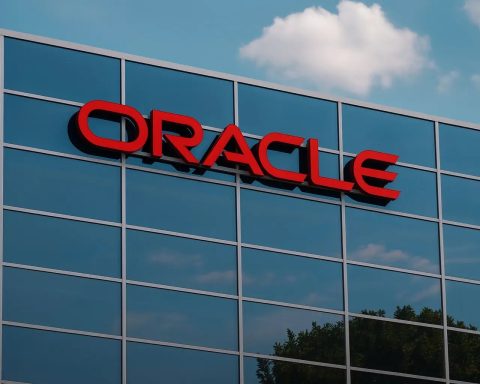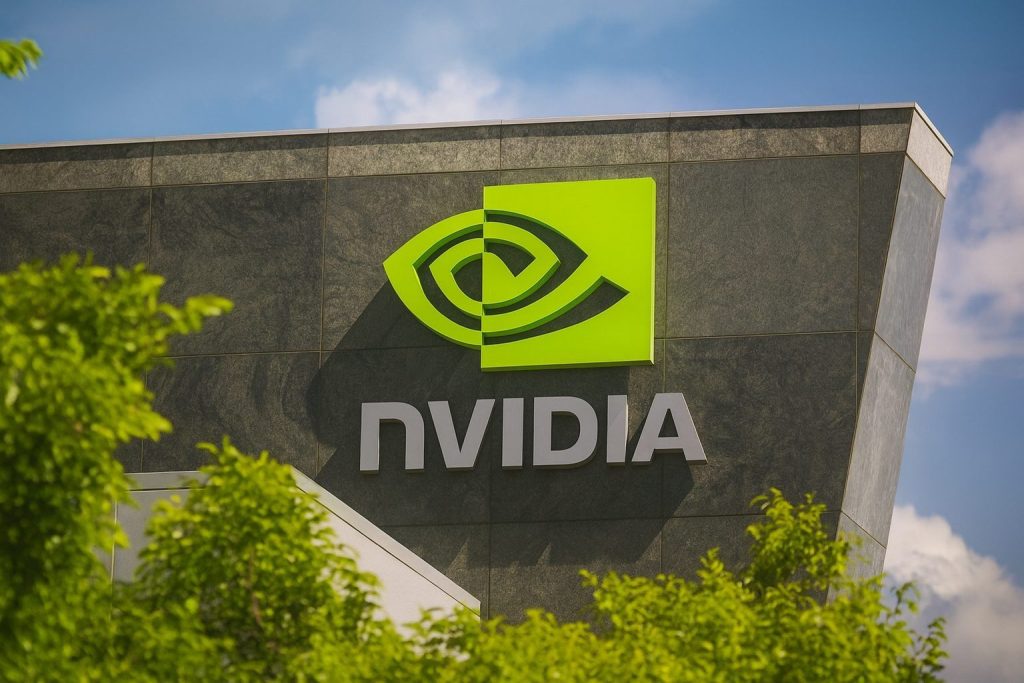On November 25, 2025, Microsoft stock is trading near a monthly high as BMO Capital, Bernstein, Jefferies, UBS, Stifel and Evercore reiterate bullish ratings. Analysts cite Azure, AI infrastructure and Copilot adoption as key drivers, with price targets ranging from $625 to $730 and expectations of double‑digit cloud growth.
- Microsoft stock has climbed to a new monthly high, gaining about 1% in early Tuesday trade as investors respond to another wave of bullish analyst commentary on AI and Azure. [1]
- BMO Capital has reiterated its Outperform rating and $625 price target after meetings at Microsoft’s Ignite conference, describing the company’s AI business as an emerging “agentic super store” alongside its traditional software strength. [2]
- Bernstein’s Mark Moerdler has reaffirmed a Buy/Outperform call with a $645 target, implying roughly 35–36% upside from a recent price around $474, driven by “extremely strong” demand for Azure and Microsoft’s AI platform. [3]
- Jefferies, UBS, Stifel and Evercore ISI remain bullish, with some price targets stretching up to $730 on the back of accelerating Copilot roll‑outs and Microsoft’s growing role in S&P 500 megacap growth. [4]
- Across reports, analysts highlight 15.6% year‑on‑year revenue growth to about $293.8 billion, a market cap around $3.5 trillion, and a premium valuation (P/E ~34) that many now view as justified by AI and cloud dominance. [5]
Microsoft Stock Price: Where MSFT Stands on November 25, 2025
In Tuesday’s session, Microsoft (NASDAQ: MSFT) shares are trading at a monthly high after rising roughly 1.0%, supported by a fresh round of positive analyst notes that center on Azure and AI. [6]
Trading data from major platforms shows:
- Market capitalization: about $3.5 trillion
- 12‑month share performance: roughly +15%
- Price to earnings (TTM): around 33–34x
- EBITDA margin: close to 58% [7]
These numbers underline why Microsoft remains one of the most systemically important stocks in the S&P 500. Citi strategist Scott Chronert recently highlighted Microsoft as a key pillar of the megacap growth trade, estimating that companies like Microsoft account for roughly one‑fifth of the S&P 500’s market value. [8]
BMO Capital: Microsoft as an AI “Agentic Super Store”
One of the most striking pieces of commentary comes from BMO Capital, which has reiterated its Outperform rating and $625 price target after meetings tied to Microsoft’s Ignite conference. [9]
Key points from BMO’s stance:
- Microsoft’s strategy is seen as well aligned with emerging AI opportunities, while still sustaining momentum in Office, Windows and enterprise software. [10]
- The firm characterizes Microsoft as both an “agentic super store” in AI—a platform where customers can tap a growing ecosystem of AI agents and copilots—and a cost‑effective provider of productivity and cloud tools across its legacy businesses. [11]
- Financially, analysts point to revenue of about $293.8 billion, up 15.6% year over year, as evidence that Microsoft is turning AI narratives into real growth. [12]
BMO’s tone fits into a broader pattern: rather than treating AI as an experiment, the brokerage now frames Microsoft as a core infrastructure and application provider for the AI era, from Azure data centers to enterprise copilots.
Bernstein: Azure Demand and a $645 Price Target
Bernstein has reinforced that view. In a note highlighted by Investing.com and TipRanks, analyst Mark Moerdler reiterated a Buy/Outperform rating with a $645 price target, implying roughly a mid‑30s percentage upside from recent levels. [13]
Bernstein’s thesis centers on:
- “Extremely strong” demand for Azure, which the firm believes is still underappreciated by the market. [14]
- Azure’s growing role as a preferred platform for both AI and non‑AI workloads, especially for enterprises standardizing on Microsoft’s stack. [15]
- Confidence that Microsoft can translate demand into revenue, with the main limit now being data center capacity, not customer appetite. [16]
Moerdler’s report echoes the argument made in a recent Seeking Alpha analysis: that Microsoft’s AI and Azure leadership justify a premium valuation, thanks to its end‑to‑end AI platform and deep partnership with OpenAI, backed by strong margins and cash flow across its major segments. [17]
Ignite Afterglow: Copilot Adoption and In‑House Chips
The post‑Ignite analyst reaction has been particularly important for sentiment around Microsoft stock.
A TradingView “key facts” summary notes that Jefferies, UBS, Stifel, and Evercore ISI are all bullish following the event, pointing to: [18]
- Strong adoption of Microsoft Copilot, as large enterprises transition from pilot projects to company‑wide roll‑outs.
- Price targets reaching as high as $730 per share among the more optimistic houses.
- Microsoft’s accelerating investments in custom semiconductors, aimed at reducing reliance on Nvidia GPUs and improving the economics of AI data centers.
The same summary highlights commentary from investor Michael Burry, who sees Microsoft as a central beneficiary of a projected near‑$3 trillion wave of AI infrastructure spending over the next three years, underscoring how much capital is expected to flow into cloud and AI hardware. [19]
Azure, Anthropic and the AI Infrastructure Flywheel
Beyond ratings, several recent reports emphasize the scale of Microsoft’s AI infrastructure push:
- AInvest notes that Microsoft shares have climbed 1.01% to a monthly high, with analysts maintaining Outperform/Buy ratings and price targets between $625 and $730. [20]
- The same piece points to partnerships such as the $30 billion Azure deal with Anthropic, under which the AI company is set to purchase substantial cloud capacity from Microsoft, supporting both Claude and ChatGPT‑style workloads. [21]
- Analysts cited by AInvest expect Azure revenue to grow roughly 30–40% by 2026, driven by AI workloads, on‑device AI integration and Copilot adoption across Microsoft 365. [22]
Taken together, these developments reinforce the view of Azure as the backbone of Microsoft’s AI monetization strategy, with every major AI partnership—from OpenAI to Anthropic—feeding additional demand for compute, networking and storage.
How Premium Is “Premium”? A Look at Valuation
From a valuation perspective, Microsoft is hardly cheap:
- P/E (TTM): ~33.6x
- Market cap: around $3.5 trillion
- All‑time high: about $555 per share, reached in July 2025 [23]
However, the “premium multiple” is exactly what several analysts now argue is warranted:
- The Seeking Alpha‑linked analysis (widely syndicated on financial platforms) describes Microsoft as uniquely positioned to lead the AI revolution, thanks to an end‑to‑end platform that spans infrastructure (Azure), models (through OpenAI and other partners), and applications (Copilot, Dynamics, developer tools). [24]
- Microsoft’s revenue growth of 15.6%, coupled with very high profit margins and strong free cash flow, supports the case that the company is still in a robust growth phase despite its size. [25]
In short, Wall Street’s message on November 25, 2025 is that Microsoft may be expensive in absolute terms, but not relative to its growth profile and strategic position in AI.
Risks and What Could Go Wrong
Despite the upbeat tone, analysts and market commentators are not ignoring the risks:
- Capacity and Execution
- Bernstein explicitly points out that Azure’s growth is bounded more by data center capacity than demand, implying heavy capital expenditure and potential bottlenecks if projects run behind schedule. [26]
- Dependence on AI Partners
- TradingView’s snapshot notes concerns over whether OpenAI can finance its very large compute commitments with Microsoft, at a time when enthusiasm for AI stocks has cooled from its peak. [27]
- Macro and Market Sentiment
- Some commentators, including TV personalities like Jim Cramer, have flagged periods of sharp pullbacks in Microsoft and other AI names, arguing that sentiment can swing quickly even when fundamentals remain strong. [28]
- Competition and Regulation
- While not the focus of today’s notes, Microsoft faces aggressive competition from other cloud giants and is under increasing regulatory scrutiny across multiple regions—factors that could influence margins and growth over time.
These caveats help explain why, even as targets move higher, analysts frame their optimism as contingent on continued AI adoption, disciplined capital allocation and timely delivery of new capacity.
What Today’s Wave of Analyst Calls Means for Investors
For investors following Microsoft, the November 25, 2025 news flow sends several clear signals:
- Consensus remains firmly bullish. Across BMO, Bernstein, Jefferies, UBS, Stifel, Evercore and others, Microsoft continues to carry a Strong Buy‑style consensus rating around 1.25 on common scales, with targets clustered between $625 and $730. [29]
- The narrative is now squarely about AI and Azure. Cloud infrastructure, custom silicon, AI copilots and billion‑dollar partnerships are at the center of almost every note.
- Valuation is high, but framed as earned. Rather than warning that MSFT is “too expensive,” many analysts argue that the scale and durability of its AI moat justify a premium multiple. [30]
At the same time, the focus on capacity constraints, large AI commitments and partner risks is a reminder that even a dominant player like Microsoft is not a one‑way bet.
Bottom Line
As of November 25, 2025, Microsoft remains the flagship stock of the AI and cloud trade. Fresh endorsements from BMO and Bernstein, alongside bullish commentary from Jefferies, UBS, Stifel and Evercore, have helped push the shares to a monthly high, with Wall Street now openly targeting $625–$730 over the medium term. [31]
Whether that upside materializes will depend on Microsoft’s ability to convert AI hype into sustained Azure growth, manage massive infrastructure build‑outs and navigate an increasingly crowded and regulated AI landscape.
Disclaimer: This article is for informational and news‑reporting purposes only and does not constitute investment advice or a recommendation to buy or sell any security.
References
1. www.ainvest.com, 2. www.gurufocus.com, 3. www.tipranks.com, 4. www.tradingview.com, 5. www.gurufocus.com, 6. www.ainvest.com, 7. www.tradingview.com, 8. www.tradingview.com, 9. www.gurufocus.com, 10. www.gurufocus.com, 11. www.gurufocus.com, 12. www.gurufocus.com, 13. www.tipranks.com, 14. www.investing.com, 15. www.tipranks.com, 16. www.investing.com, 17. stockanalysis.com, 18. www.tradingview.com, 19. www.tradingview.com, 20. www.ainvest.com, 21. www.ainvest.com, 22. www.ainvest.com, 23. www.tradingview.com, 24. stockanalysis.com, 25. www.gurufocus.com, 26. www.investing.com, 27. www.tradingview.com, 28. www.insidermonkey.com, 29. www.ainvest.com, 30. stockanalysis.com, 31. www.gurufocus.com







